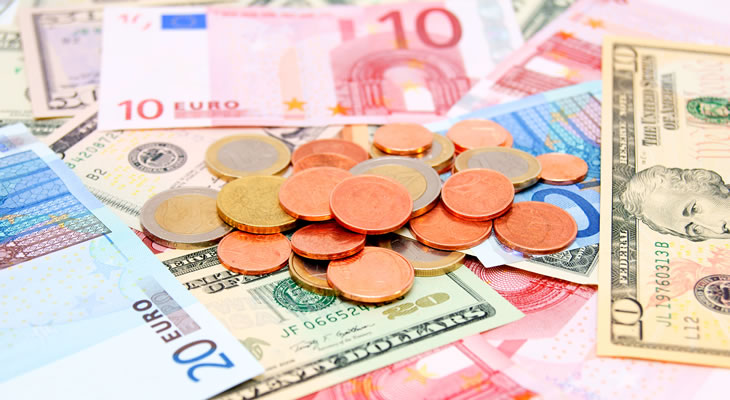The Euro US Dollar 2017 exchange rate has flirted near its lowest levels in over a decade since the end of December due to persistent headwinds. However, ‘uncertainty’ is the word for 2017 and applies equally to the US Dollar; as a result the pairing may be able to avoid the dreaded threat of parity.
Euro (EUR) Benefits from USD Weakness and Eurozone Ecostats
The Euro has been able to advance slightly this week due to various factors that have momentarily distracted traders from the long-term downside risks in the shared currency.
This week’s Eurozone data included news that consumer prices in the bloc had beaten expectations and risen by 1.1% in December. Eurozone PMIs from Markit have also come in strongly this week, with services and composite figures beating projections.
Friday’s session saw the publication of German retail sales results from November, which printed a strong 3.2% year-on-year but slumped -1.8% month-on-month.
Risks for the shared currency remained biased to the downside however, with investors persistently concerned that the Eurozone bloc could face a wave of rising populism in the coming year.
US Dollar (USD) Loses Out as Hong Kong Tightens Borrowing Costs
US Dollar demand has weakened this week despite US private sector datasets coming in above expectations. This has been partially due to profit taking, but also an unexpected surge in the Chinese Yuan (CNY).
The People’s Bank of China (PBoC) took measures against traders betting against the Yuan this week by tightening borrowing costs on Thursday and Friday.
As a result, traders around the foreign exchange market rushed to buy CNY, causing it to see its biggest two-day-gain ever against the US Dollar.
This move is the primary reason for low US Dollar demand this week and has allowed EUR USD to comfortably hold above its worst levels.
Euro US Dollar 2017 Exchange Rate Forecast to Hold if Uncertainty Weakens ‘Greenback’
Many analysts predict the Euro US Dollar 2017 exchange rate will be bearish due to political and economic concerns in the Eurozone, as well as the reflationary proposals of US President-elect Donald Trump.
While it’s entirely reasonable to believe EUR USD will drop in the long-term and hit parity as warned by some analysts, many investors have already bet on the US Dollar advancing, meaning there is little room for upward movement if the outlook remains strong, but significant downside potential should optimism wane.
Donald Trump will take office on the 20th of January and from that point onwards USD traders will be watching the actions of him and his administration closely.
If he struggles to get his proposed economic stimulus policies to take off or if they don’t have the desired effect on the economy, traders may begin to bet against the US Dollar which would likely leave EUR USD stronger even if Eurozone political concerns persist.
The Federal Reserve warned in December that uncertainty was high. Officials also hinted that, as the US job market is almost near capacity already, Trump’s stimulus measures may not have as great an effect as hoped.
In the short-term, the December US Non-Farm Payroll report will give investors a good idea of the health of the US job market as Trump prepares to take office.
EUR USD Interbank Rate
At the time of writing, the Euro US Dollar 2017 exchange rate trended in the region of 1.06, while the US Dollar Euro exchange rate traded at around 0.94.


Comments are closed.